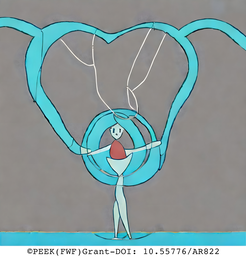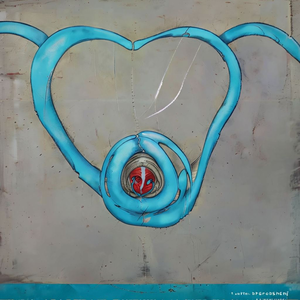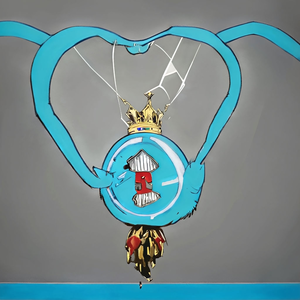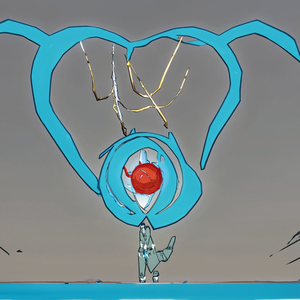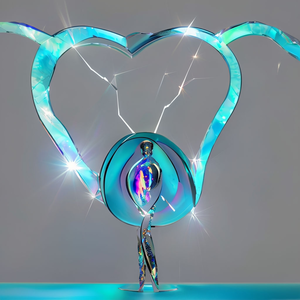1. STATE OF THE ART OF RELEVANT INTERNATIONAL ARTS-BASED RESEARCH (INCLUDING OWN PRELIMINARY WORK)
At the time the principle investigator (PI) started to focus his research on the relation of performance and philosophy in 1997, neither the notion of *Lecture-performance* (Kruschkova 2013), nor the problem of *Arts-based-Philosophy*, of *Artistic-Research* (AR) or of *Performance Philosophy* (PP) (https://www.performancephilosophy.org/) had been recognized as emerging research fields within the worldwide community of academic philosophy.
Things have changed significantly since then. In the last 25 years a couple of cross-disciplinary and cross cultural research networks of artists, scientists and philosophers have been established around the globe to investigate the cutting edge of *Philosophy & The Arts*. To mention a few salient examples:
o In 2013 Böhler and Granzer were part of the inaugurating PP-conferences, led by Alice Laagay and Laura Cull at FU-Berlin (“SFB-Kulturen des Performativen”) and at Surrey (Lagaay and Cull 2014). o Since 2005 Böhler and Granzer themselves have been developing the research formats Philosophy On Stage (POS) and arts-based-philosophy, in which they stage philosophy. This has meant implementing artistic practices into their philosophical investigations in order to bring back the physicality, materiality and sensuality of the body into the research agenda of philosophy; and, vice versa, creating and implementing philosophical concepts into artistic research practices. (Böhler and Granzer 2021b, 2020; Böhler 2019a, Böhler et al. 2017)
o Since then, *staging philosophy* has become a role model for several AR and PP-festivals in the German speaking area as POS #1-#5, https://homepage.univie.ac.at/arno.boehler/php/film-lectures/, soundcheck philosophy https://www.soundcheckphilosophie.de, Leipzig denkt, https://www.leipzig denkt.de/start.html, or unbound philosophy https://www.facebook.com/philosophyunbound/.
o Between 2005 and 2020 Böhler and Granzer have realized in total 5 research festivals Philosophy On Stage#1-#5 (https://homepage.univie.ac.at/arno.boehler/php/film-lectures/): POS#1 and POS#2 took place in the course of a research project on the Materiality and Temporality of Performative Speech Acts (FWF: P17600) at Museumsquartier, Kosmostheater and Theseustempel in Vienna (2005-2007). POS#3 was realized in the context of the research project “Generating Bodies” (TRP12-G21) at Haus Wittgenstein in Vienna (2010-2014). POS#4 was part of their PEEK-project Artist-Philosophers (2014-2018). (http://homepage.univie.ac.at/arno.boehler/php/?p=2018). In the course of this research Böhler and his team edited inter alia a bi-lingual edition in the PP-Journal Philosophy On Stage: The Concept of Immanence in Contemporary Art and Philosophy (https://www.performancephilosophy.org/journal/issue/view/6; Böhler et.al. 2017) as well as a number of articles, e.g. in the Routledge Companion to Performance Philosophy (Böhler and Granzer 2020, pp. 387-394) or in the ERC-AR-project DARE, led by Paulo de Assis and Lucia D’Errico (Böhler 2019c), to mention two examples. At the end of this former PEEK-project they created the research-festival POS#4 with 37 *field-performances* at Tanzquartier Wien https://www.researchcatalogue.net/view/365941/365942, one of the leading institutions in the field of contemporary dance and performance art in Europe. All these projects were funded by the Austrian Science Fund (FWF) and led by Böhler as PI.
To decenter a Eurocentric dominated concept of AR and PP, Böhler and Granzer have finally decided to continue their work in India and confront it with the work of artistic researchers there.1 Between 2016-2020 they have realized 4 research-retreats on “arts-based-philosophy // artistic research” in Tamil Nadu India, each for 3 months. In these retreats art-students from Europe encountered artistic researchers from India to collectively develop AR and PP-practices, which finally were staged at POS#5 in co-operation with Adishakti in Tamil Nadu India (LINK RC; http://adishaktitheatrearts.com/; https://svaram.org/). Adishakti is a highly-esteemed institution for experimental research in Theater and Performance Art in India. Unfortunately, the COVID-19 pandemic stopped this initiative, which now takes place in a new form as a research-seminar for art and philosophy students in Lower Austria (https://homepage.univie.ac.at/arno.boehler/php/base-research-centre-for-artistic-and-arts-based-philosophy/ ; 2022-2023). Currently, Böhler is engaged in the AR project Contingent Agencies (https://contingentagencies.net/researchers/), led by Nikolaus Gansterer and Alex Arteaga (2018-2023). Contingent Agencies focuses on atmospheres as “subtle, dynamic, complex, and enveloping presences that emerge in given situations for those who inhabit them.” https://contingentagencies.net.
4. DESCRIPTION OF THE PROJECT’S ANTICIPATED LEVEL OF ORIGINALITY OR ARTS BASED RESEARCH INNOVATION
4.1. Staging Philosophy in Field-performances: A New Innovative AR-Method
The artistic formats *field-performance*, *Philosophy On Stage* and *arts-based-philosophy* have been conceptually developed and artistically realized by Böhler and Granzer in the course of their former research projects, founded by the Austrian Science Fund (FWF) in the periods 2005-2008, 2010-2014 and 2014-2018. They have introduced the word *field-performance* to emphasize the field-character (kṣetra) of the work they intend to expose on stage artistically and philosophically (cf. Bäumer 1988, 20).
For them, an *artistic-field* is, in the first place, an *area of space* (Nancy 2008, 43-46) that becomes vibrant and pulsating (Böhler 2023, Bennett 2010) in and through artistic modes of stimulating a *virtual void* (śūnyatā, vyoman, ākāśa) that resides right in the middle of the emptiness of a *Heart* (Dyczkowszky 1992b, 42). Hence, a *field-performance* does not take place in a white or black box only, but rather in the emptiness of a *Heart* (vyoman, Ortez 1989), capable to be stimulated, to curl, pulsate, and oscillate (spanda cf. Dyczkowszky 1992a): The light that actually expands in a field-performance is conceived to be a vibrant visual field in this context. The sounds, which expand in a performance are perceived as vibrant acoustic fields which literally *fulfill* the emptiness of a *Heart* atmospherically with a particular waving (etheric) body. Emotions, which actually expand in a performance space among its inhabitants are perceived to be another field of vibrant matter, namely emotive vibes that circulate atmospherically among the lived-bodies inhabiting a *field-performance* (Desphande 1989, Ingold 2016). Everybody and everything that inhabits a *field-performance* thus becomes itself a vibrant part of the *atmospheric body* (German: Stimmung) that artistically emerges in the unfolding of a *field-performance*. And even the discursive activities uttered on stage verbally are actually creating a mental atmosphere within a particular performance space that circulates among the inhabitants as a vibrant mental field (Gansterer and Arteaga 2023). In this respect an *artistic field* shows similarities to quantum-field-theories in contemporary physics, in particular to the concept of “fluctuations in quantum vacuum” (Traxler 2017; Barad 2007, Brooks 1991).
The format *field-performance* invites artistic researchers and the audience to enter a performance space and collectively inflame *first matter* anew with their special expertise, with their appetites (appetitus), their sensitivity and longings (cupiditas), as well as with their voluntary activities (voluntas). Appetitus, cupiditas, voluntas are the three stages, on which a *conatus* unfolds according to Spinoza’s Ethics (3p9s). All members of our *core Artistic Research Ensemble* (cARE) are therefore invited to enter our research
field “On The Significance of the *Heart* in AR and PP” to cordially inflame the *virtual void* of *first matter* with their special AR-expertise and artistic, philosophical and scientific aspirations.
Wider arts-based research context
Arts-based-philosophy is an emerging research concept at the cutting edge of the arts, philosophy and the Sciences, in which cross-disciplinary research collectives align their research practices to finally stage their investigations in field-performances, shared with the public.
Objectives
Our research aims to explore the significance of the *heart* (intuitive reason) for artistic research and performance philosophy from a cross-cultural perspective. The investigations are based on the concepts of the *heart* in the works of two artist-philosophers, who gave us a delicate taste of what art-based-philosophy could be, once the arts and philosophy cross their potentials: Nietzsche’s Thus Spoke Zarathustra and Aurobindo’s poetic opus magnum Savitri.
Methods and Formats
Our artistic research methods will include the following research formats: art-labs, a notebook, a mobile heart-lab and 12 field-performances, in which the voices of contemporary Physics, Cardiology, South-Asian-Studies, Nietzsche-Studies and the arts will finally be staged on two research festivals Philosophy On Stage#6-#7 in Vienna (BRUT Wien) and in India (ADHISHAKTI Laboratory For Theatre Art Research and SVARAM Music Research). The format *field-performance* has been developed by Böhler (PI) and Granzer over the last 25 years as an innovative method to stage philosophical questions in cross-disciplinary manner in touch with the public.
Innovation
What is new in the conception of the *heart* in Nietzsche and Aurobindo is their common claim, that a *heart* implies a virtual plane of possibilities. *Hearts* are drawn toward a future to come which make them attractors of virtual possibilities, ready to matter. In its deepest depth, a *heart* cares for the event of possibilities, that so far have
not yet mattered by creating a taste (bodily-felt-sense) that allows one to feel the possibility of a future, right before it does matter, flash and collapse. Such concepts show striking similarities with contemporary concepts in philosophy-physics, e.g. the concepts of “virtual particles” and “quantum vacuum fluctuations” (Barad, Traxler).
It is telling, that in Indian philosophy and aesthetics an aesthete is called sahṛdaya––a term, which literally means “somebody, with a heart.” As if an aesthete would be a person that is defined by thinking in alignment with his/her *heart* and not against his/her *heart*.
Primary stuff involved in the project
Arno Böhler (PI, artist-philosopher) and our “core Artistic Research Ensemble” (cARE): Aurelio (SVARAM), Patrick Beldio (South-Asian-Studies), Jyoti Dogra (Performer), Nikolaus Gansterer (Painter), Susanne V. Granzer (Actress), Florian Reiners (Actor/Speech trainer), Sabina Holzer (Dancer), Johannes Kretz (Musician), Stefan Dobner (Cardiologist), Tanja Traxler (Quantum Physicist), Yunus Tuncel (Nietzsche Scholar), Evi Jägle (PhD), Christoph Müller (PhD).
Co-operating institutions: University of Music and Performing Arts Vienna (research seat: ARC-mdw), Adishakti Theatre Research (India), Svaram Musical Instruments and Research (India), BRUT WIEN, Volkstheater Wien, University of Vienna (Department of Philosophy).
2. The Role of Nietzsche and Aurobindo
Article is planed to be published by mdwPress in 2025 (under peer review)
3. CLEARLY DEFINED AIMS AND HYPOTHESES OR ARTS-BASED RESEARCH QUESTION(S) OF THE PROJECT IN A TABULAR FORM
✔ Major hypothesis 1: We assume that artist-philosophers are a new species of philosophers which actually cross philosophical and artistic research practices to generate a hybrid form of art & philosophy that triggers new ways of AR and PP. The works of artist-philosophers have to be staged artistically, precisely because they address a virtual future that has to be called into being at first artistically to give us beforehand an imaginary taste of its actualization. Thus Spoke Zarathustra and Savitri are excellent role models for such
a cross-over. They give us a delicate taste of what AR and PP could be, once they cross their potentials. RQ: How can one conceptually grasp and structurally analyze the role of the *Heart* in Thus Spoke Zarathustra and Savitri? And how can we notify, register, reflect and finally stage artistically the influence of the *Heart* at work in our own AR and PP research performance?
✔ Major hypothesis 2: We assume with Aurobindo, and several Indian philosophies and aesthetics that the emptiness of the *Heart* is a void (śūnyatā, vyoman, ākāśa) that can be filled in an emergent manner by stimulating atmospherically those virtual regions of a *Heart* that so far have not been stimulated and thus still rest in silence. The concrete plane, Aurobindo is aspiring for to matter next in the evolutionary course of time is the unfolding of the gnostic plane, which still rests in silence in the background of our manifest (psychic) nature. It can be felt, once a *Heart* becomes the attractor of a gnostic future. RQ: How can we map the different regions of the *Heart* according to Nietzsche and Aurobindo? And what is the relation of the *Heart-mind* toward other faculties and regions of the mind: Regions, which Aurobindo called the physical, the vital, the mental, the intuitive and the spiritual (gnostic, supra-mental) mind? How would AR and PP look like from the perspective of a gnostic mind? (Scientia intuitiva)
✔ Major hypothesis 3: We assume that Aurobindo’s concept of the gnostic *Heart*, in which certain regions within the emptiness of a *Heart* are made to pulsate (e. g. the plane of vijñāna) while others are de-activated (e.g. the plane of avidyā) shows striking similarities to some contemporary concepts of *philosophy-physics*, for instance the concepts of virtual particles and quantum-vacuum-fluctuations [Barad 2007, p. 225, Traxler 2017, cf. Bennett 2010; Kirby 2017; Nail 2021].
RQ: How can we make these resemblances and differences among contemporary philosophy-physics and Aurobindos concept of the *(pulsating) Heart*, that activates the gnostic region in a heart, visible by stimulating a cross-disciplinary and cross-culturally research among philosophy-physics, Nature philosophy (Cardiology, physics) and the arts? What are concrete artistic and yogic technics to activate or de-activate certain regions of a *Heart*?
Consolidation: The first overall aim of this PEEK-project is (a) to consolidate and enhance the research of this young but worldwide growing research field AR and PP.
Secondly, (b) to consolidate the international leadership role, our *core Artistic Research Ensemble* (cARE)2 plays in the emerging research fields of AR and PP. The Scientific Advisory Board, which is part of cARE, will advise our artistic explorations on the *Heart* to ensure that they will be scientifically informed on the state of the art of contemporary Sciences (Cardiology, quantum physics) and relevant Philosophies (South-Asian Studies and Nietzsche Scholarship).
Finally, our research aims (c) to solidify and strengthen the important role that Austria plays in the emerging research fields of AR and PP. In this respect the artistic-research-center at the University of Music and Performing Arts Vienna (arc-mdw) will provide us a research environment with the highest international standards. (In the 2022 QS World University Rankings, mdw has been appointed the second place worldwide in the performing arts category. https://www.mdw.ac.at/qsworlduniversityranking2022/).
4. DESCRIPTION OF THE PROJECT’S ANTICIPATED LEVEL OF ORIGINALITY OR ARTS BASED RESEARCH INNOVATION
4.1. Staging Philosophy in Field-performances: A New Innovative AR-Method
The artistic formats *field-performance*, *Philosophy On Stage* and *arts-based-philosophy* have been conceptually developed and artistically realized by Böhler and Granzer in the course of their former research projects, founded by the Austrian Science Fund (FWF) in the periods 2005-2008, 2010-2014 and 2014-2018. They have introduced the word *field-performance* to emphasize the field-character (kṣetra) of the work they intend to expose on stage artistically and philosophically (cf. Bäumer 1988, 20).
For them, an *artistic-field* is, in the first place, an *area of space* (Nancy 2008, 43-46) that becomes vibrant and pulsating (Böhler 2023, Bennett 2010) in and through artistic modes of stimulating a *virtual void* (śūnyatā, vyoman, ākāśa) that resides right in the middle of the emptiness of a *Heart* (Dyczkowszky 1992b, 42). Hence, a *field-performance* does not take place in a white or black box only, but rather in the emptiness of a *Heart* (vyoman, Ortez 1989), capable to be stimulated, to curl, pulsate, and oscillate (spanda cf. Dyczkowszky 1992a): The light that actually expands in a field-performance is conceived to be a vibrant visual field in this context. The sounds, which expand in a performance are perceived as vibrant acoustic fields which literally *fulfill* the emptiness of a *Heart* atmospherically with a particular waving (etheric) body. Emotions, which actually expand in a performance space among its inhabitants are perceived to be another field of vibrant matter, namely emotive vibes that circulate atmospherically among the lived-bodies inhabiting a *field-performance* (Desphande 1989, Ingold 2016). Everybody and everything that inhabits a *field-performance* thus becomes itself a vibrant part of the *atmospheric body* (German: Stimmung) that artistically emerges in the unfolding of a *field-performance*. And even the discursive activities uttered on stage verbally are actually creating a mental atmosphere within a particular performance space that circulates among the inhabitants as a vibrant mental field (Gansterer and Arteaga 2023). In this respect an *artistic field* shows similarities to quantum-field-theories in contemporary physics, in particular to the concept of “fluctuations in quantum vacuum” (Traxler 2017; Barad 2007, Brooks 1991).
The format *field-performance* invites artistic researchers and the audience to enter a performance space and collectively inflame *first matter* anew with their special expertise, with their appetites (appetitus), their sensitivity and longings (cupiditas), as well as with their voluntary activities (voluntas). Appetitus, cupiditas, voluntas are the three stages, on which a *conatus* unfolds according to Spinoza’s Ethics (3p9s). All members of our *core Artistic Research Ensemble* (cARE) are therefore invited to enter our research
field “On The Significance of the *Heart* in AR and PP” to cordially inflame the *virtual void* of *first matter* with their special AR-expertise and artistic, philosophical and scientific aspirations.
5. INNOVATIVE METHODS AND WORK-PACKAGES (WP)
*WP 1: The first task of cARE consists in creating a *notebook*. The *notebook* will be an artefact that stands for itself, but also serves as a script for the *field-performances*, which finally will be staged at the research-festival POS#6 and POS#7 at BRUT Wien in Vienna as well as in India at ADISHAKTI Theatre Research and SAVRAM. The notebook will include visual notifications of impulses, intuitions, arguments, concepts, reflections and analysis that emerge in the course of our research among the members of cARE.
The notebook will include discursive elements, but also drawings, stage-plans, photos, videos, handwritings, poems and the notifications and reflections of our Scientific Advisory Board, who will articulate the voices of contemporary Physics, Cardiology, South-Asian Studies and Nietzsche-Studies. The *notebook* will be published finally as a bi-lingual art-book in English and German. Involved researchers: All members of cARE will contribute texts and visual material to the notebook as a standalone publication as well as a script for the field-performances at POS#6 and POS#7.
*WP 2: We aim to make an experimental film on the utopian city-project Auroville (Tamil Nadu, India). Auroville is a field-experiment in Tamil Nadu for the construction of a utopian city, inaugurated by Mira Alfassa in 1968 on the basis of Sri Aurobindo’s philosophy. We read Auroville as a social sculpture on the scale of an entire city. The city stands under the protection of UNESCO and has been an object of investigation already in the PhD thesis of PI Böhler. Aurelio, one of our key researchers, lives there since more than 30 years. As an artefact, this experimental-film will be sent to the annual Auroville Film Festival and other experimental film festivals in Europe and abroad. Like the notebook the film will also serve as a material for the field-performances, staged on POS#6-POS#7. Involved researchers: Böhler (PI), Granzer, Evi Jägle (video-artist, PhD position), camera women N. N.
*WP 3: cARE will realize 12 cross-disciplinary *field-performances* on The Significance of the Heart in AR and PP. The *notebook* and the *experimental film on Auroville* will be core sources of inspiration for 12 *field-performances*, while the poetic concepts of the *Heart* in Savitri and Thus Spoke Zarathustra will serve us as a dramaturgical thread that runs through all of them. Finally, these field-performances will be shared with the public. Involved researchers: All members of cARE contribute texts and visual materials for them. Our Scientific Advisory Board will be part of their staging and artistic development.
*WP 4: cARE will conceptualize and organize the research-festival POS#6-POS#7 in which our research will be shown to the public. Firstly at BRUT, a prominent performance venue in Vienna and secondly at ADISHAKTI Theatre Research and SVARAM Music Research in Tamil Nadu India. POS#6 and POS#7 will function as a habitat that allows all 12 *field-performances* to emerge in touch with the public. The staging of these events will be video-documented and published on the project website of theRC. POS#6 and POS#7 will not just present finished results and outcomes to the public, but again risk the findings reached till then by exposing them again artistically, philosophically and scientifically to the public. Involved researchers: The organizational duties will be accomplished by PI Böhler and Evi Jägle (PhD position). The staging of POS#6-#7 will be realized collectively by all members of cARE.
*WP 5: Digital Web-Archive – Research Catalogue (RC). A web-version of the notebook, of our film on Auroville, the documentation of the research process and the video-documentation of the field performances, staged at POS#6 and POS#7 will feed our Web-Archive on the RC. Involved researchers: PI Böhler and Evi Jägle (PhD Position).
There are also some classical academic outputs planned.
Evi Jägle will accomplish a PhD in the Doctor Artium Program (arc-mdw) on the “Significance of the Heart in AR and PP” https://www.mdw.ac.at/ar_center/de/doctor-artium-program/ , mentored by PI, Johannes Kretz and Susanne Valerie Granzer.
In addition all members of cARE are asked to write articles in relevant journals like JAR, the Performance Philosophy-Journal, the Journal of New Materialist Research, Philosophy East and West etc. to disseminate our research also within the classical formats and channels of academic research.
5.1 Core Organizational Structures to Accomplish the WP 1-5
To develop our *notebook* and the *field-performances* for POS#6 and POS#7, four Art-Labs
will be initiated within the first 2 ½ years of this PEEK-project, in which cARE will meet each time for about 4 days to collectively let these artefacts emerge out of singular-plural practices. Böhler and Granzer have developed special formats how to organize such art-labs in a productive artistic manner in the course of their former research (e.g. https://homepage.univie.ac.at/arno.boehler/php/residence-programme-india/
Involved researchers: All key-artists of cARE have agreed to physically participate in these 4 art-labs. All members of the Scientific Advisory Board have agreed to attend at least two of 4 art-labs.
In order to share the philosophical, scientific and artistic expertise among the members of cARE, we will organize a monthly reading-circle (hybrid) in which the members of cARE will discuss and analyze core concepts of this PEEK project. After discussing each of these topics among the members of cARE, external experts in the respected fields will be invited to attend the reading-circle with a Zoom-lecture to share their expertise. Involved researchers: PI Böhler, Jägle (PhD). They will organize these Zoom-meetings. All members of cARE are invited to attend them regularly.
PI will organize a circle-lecture at the University of Vienna in Cooperation with mdw “On The Significance of the Heart in AR and PP”, in which distinguished experts will share their expertise with philosophy students of the University of Vienna, students of mdw and cARE. Involved researchers: PI Böhler and Jägle. All members of cARE are cordially invited to regularly attend these lectures.
To share our research with the non-academic public from the very beginning, we will install mobile *he:art labs* at public places like shopping-malls, art-institutions, hospitals, universities or at political events etc. These *he:art labs* serve as a mobile library equipped with books, artefacts and scientific articles relevant for the role, the *Heart* plays for each of us in our everydayness. Volkstheater Vienna has agreed to serve as a host for such a mobile *he:art-lab* at Red Bar (cf. Rote Bar: https://www.volkstheater.at/produktion/1774973/three-ecologies/1775096/ ). And Christoph Krammer, director of the ece shopping center Kapfenberg has invited us to install such a mobile *he:artlab* at the shopping mall he is running. In addition to these mobile *he:art labs*, regular “Yoga-Research Retreats on the Heart” will be offered to the public at the research-center KHÔRA, a center for AR and PP in the countryside of lower Austria.
These two low-threshold research formats, mobile *he:art lab* and *Yoga-Research-Retreat* are meant to integrate the interested public from the very beginning in our research-process. Involved researchers: PI Böhler, Susanne Valerie Granzer, Sabina Holzer, Evi Jägle (PhD position).
5. INNOVATIVE METHODS AND WORK-PACKAGES (WP)
*WP 1: The first task of cARE consists in creating a *notebook*. The *notebook* will be an artefact that stands for itself, but also serves as a script for the *field-performances*, which finally will be staged at the research-festival POS#6 and POS#7 at BRUT Wien in Vienna as well as in India at ADISHAKTI Theatre Research and SAVRAM. The notebook will include visual notifications of impulses, intuitions, arguments, concepts, reflections and analysis that emerge in the course of our research among the members of cARE.
The notebook will include discursive elements, but also drawings, stage-plans, photos, videos, handwritings, poems and the notifications and reflections of our Scientific Advisory Board, who will articulate the voices of contemporary Physics, Cardiology, South-Asian Studies and Nietzsche-Studies. The *notebook* will be published finally as a bi-lingual art-book in English and German. Involved researchers: All members of cARE will contribute texts and visual material to the notebook as a standalone publication as well as a script for the field-performances at POS#6 and POS#7.
*WP 2: We aim to make an experimental film on the utopian city-project Auroville (Tamil Nadu, India). Auroville is a field-experiment in Tamil Nadu for the construction of a utopian city, inaugurated by Mira Alfassa in 1968 on the basis of Sri Aurobindo’s philosophy. We read Auroville as a social sculpture on the scale of an entire city. The city stands under the protection of UNESCO and has been an object of investigation already in the PhD thesis of PI Böhler. Aurelio, one of our key researchers, lives there since more than 30 years. As an artefact, this experimental-film will be sent to the annual Auroville Film Festival and other experimental film festivals in Europe and abroad. Like the notebook the film will also serve as a material for the field-performances, staged on POS#6-POS#7. Involved researchers: Böhler (PI), Granzer, Evi Jägle (video-artist, PhD position), camera women N. N.
*WP 3: cARE will realize 12 cross-disciplinary *field-performances* on The Significance of the Heart in AR and PP. The *notebook* and the *experimental film on Auroville* will be core sources of inspiration for 12 *field-performances*, while the poetic concepts of the *Heart* in Savitri and Thus Spoke Zarathustra will serve us as a dramaturgical thread that runs through all of them. Finally, these field-performances will be shared with the public. Involved researchers: All members of cARE contribute texts and visual materials for them. Our Scientific Advisory Board will be part of their staging and artistic development.
*WP 4: cARE will conceptualize and organize the research-festival POS#6-POS#7 in which our research will be shown to the public. Firstly at BRUT, a prominent performance venue in Vienna and secondly at ADISHAKTI Theatre Research and SVARAM Music Research in Tamil Nadu India. POS#6 and POS#7 will function as a habitat that allows all 12 *field-performances* to emerge in touch with the public. The staging of these events will be video-documented and published on the project website of theRC. POS#6 and POS#7 will not just present finished results and outcomes to the public, but again risk the findings reached till then by exposing them again artistically, philosophically and scientifically to the public. Involved researchers: The organizational duties will be accomplished by PI Böhler and Evi Jägle (PhD position). The staging of POS#6-#7 will be realized collectively by all members of cARE.
*WP 5: Digital Web-Archive – Research Catalogue (RC). A web-version of the notebook, of our film on Auroville, the documentation of the research process and the video-documentation of the field performances, staged at POS#6 and POS#7 will feed our Web-Archive on the RC. Involved researchers: PI Böhler and Evi Jägle (PhD Position).
There are also some classical academic outputs planned.
Evi Jägle will accomplish a PhD in the Doctor Artium Program (arc-mdw) on the “Significance of the Heart in AR and PP” https://www.mdw.ac.at/ar_center/de/doctor-artium-program/ , mentored by PI, Johannes Kretz and Susanne Valerie Granzer.
In addition all members of cARE are asked to write articles in relevant journals like JAR, the Performance Philosophy-Journal, the Journal of New Materialist Research, Philosophy East and West etc. to disseminate our research also within the classical formats and channels of academic research.
5.1 Core Organizational Structures to Accomplish the WP 1-5
To develop our *notebook* and the *field-performances* for POS#6 and POS#7, four Art-Labs
will be initiated within the first 2 ½ years of this PEEK-project, in which cARE will meet each time for about 4 days to collectively let these artefacts emerge out of singular-plural practices. Böhler and Granzer have developed special formats how to organize such art-labs in a productive artistic manner in the course of their former research (e.g. https://homepage.univie.ac.at/arno.boehler/php/residence-programme-india/
Involved researchers: All key-artists of cARE have agreed to physically participate in these 4 art-labs. All members of the Scientific Advisory Board have agreed to attend at least two of 4 art-labs.
In order to share the philosophical, scientific and artistic expertise among the members of cARE, we will organize a monthly reading-circle (hybrid) in which the members of cARE will discuss and analyze core concepts of this PEEK project. After discussing each of these topics among the members of cARE, external experts in the respected fields will be invited to attend the reading-circle with a Zoom-lecture to share their expertise. Involved researchers: PI Böhler, Jägle (PhD). They will organize these Zoom-meetings. All members of cARE are invited to attend them regularly.
PI will organize a circle-lecture at the University of Vienna in Cooperation with mdw “On The Significance of the Heart in AR and PP”, in which distinguished experts will share their expertise with philosophy students of the University of Vienna, students of mdw and cARE. Involved researchers: PI Böhler and Jägle. All members of cARE are cordially invited to regularly attend these lectures.
To share our research with the non-academic public from the very beginning, we will install mobile *he:art labs* at public places like shopping-malls, art-institutions, hospitals, universities or at political events etc. These *he:art labs* serve as a mobile library equipped with books, artefacts and scientific articles relevant for the role, the *Heart* plays for each of us in our everydayness. Volkstheater Vienna has agreed to serve as a host for such a mobile *he:art-lab* at Red Bar (cf. Rote Bar: https://www.volkstheater.at/produktion/1774973/three-ecologies/1775096/ ). And Christoph Krammer, director of the ece shopping center Kapfenberg has invited us to install such a mobile *he:artlab* at the shopping mall he is running. In addition to these mobile *he:art labs*, regular “Yoga-Research Retreats on the Heart” will be offered to the public at the research-center KHÔRA, a center for AR and PP in the countryside of lower Austria.
These two low-threshold research formats, mobile *he:art lab* and *Yoga-Research-Retreat* are meant to integrate the interested public from the very beginning in our research-process. Involved researchers: PI Böhler, Susanne Valerie Granzer, Sabina Holzer, Evi Jägle (PhD position).
FWF-PROPOSAL AR822 ABSTRACT*
*Extended version of the proposal forthcoming in The Flavor of Thinking, mdwPress, Vienna, August 2025.
PHILOSOPHY IN THE ARTS : ARTS IN PHILOSOPHY.
CROSS-CULTURAL RESEARCH ON THE SIGNIFICANCE OF THE
IN ARTISTIC RESEARCH AND PERFORMANCE PHILOSOPHY
Sponsered by the Austrian Science Fund (FWF) Grant-DOI: 10.55776/AR822
This research is funded in whole or in parts by the Austrian Science Fund (FWF). Grant DOI: 10.55776/ AR822
This lecture aims to introduce you to the fundamental philosophical concepts of Tantric philosophies. A key idea shared by many tantric philosophies and New Materialism is that consciousness (cit) implies a form of mattering (spanda), represented by a "body of consciousness" or a vibrational body. The heart (hṛdaya) is the pulsating center of this mind-matter, acting not as an organ but as a universal habitat that can be felt within the human body. When the sense of taste (rasa) is directed toward the nature of the self in meditative and artistic practices, it can lead to a sensory recognition of the self (svasvarūpa), recalling the Tantric view that the Absolute can be sensually touched.
The aim of this lecture is to introduce philosophical concepts of the heart from the Indian cultural context. In Indian philosophy, the heart is seen less as an organ and more as a vast space connecting all things, reaching from the unconscious depths to the heights of the transcendent, as described in the Ṛgveda. This heart-space transcends opposites like existence and non-existence, social differences, and gender distinctions, dissolving them in its all-encompassing vastness. The lecture explores how the heart, viewed as a cognitive organ, reveals truths (ṛtam) through a unique form of insight, distinct from mental thinking or physical sensation, and why it plays such a central role in Indian aesthetics and philosophy.
This lecture provides an introduction to Indian philosophy, focusing on the darśana of Yoga philosophy, one of the six orthodox systems of Indian thought. The course begins with a historical overview of various Yoga schools, covering concepts like Karmayoga, Patañjali Yoga, Jñānayoga, and Bhakti Yoga. In the second part, we will discuss prominent 20th-century Yoga figures such as Vivekananda, Krishnamacharya, and Aurobindo. The third section focuses on Sri Aurobindo Ghose's "Integral Yoga," exploring his synthesis of Yoga traditions and reflecting on his views on Indian philosophy, politics, and postcolonial issues.
Article. Arno Böhler 2024. "Gilles Deleuze: Kantlektüren", in: Violetta L. Waibel, Max Brinnich, Gabriele Geml, Philipp Schaller, Immanuel Kant: Freiheit, Vernunft, Sinnlichkeit - Ein vielstim- miger Widerhall. Peer-reviewed + open access.
https://www.degruyter.com/document/doi/10.1515/9783111386270-015/pdf
Article. Arno Böhler 2025. "KHÔRA. Sensing Tasting Notating Reflecting Atmospheres". Article. In: Nikolaus Gansterer, Alex Arteaga (eds.), Contingent Agencies. Berlin: De Gruyter. Peer-reviewed + open access. https://phaidra.bibliothek.uni-ak.ac.at/detail/o:74284
